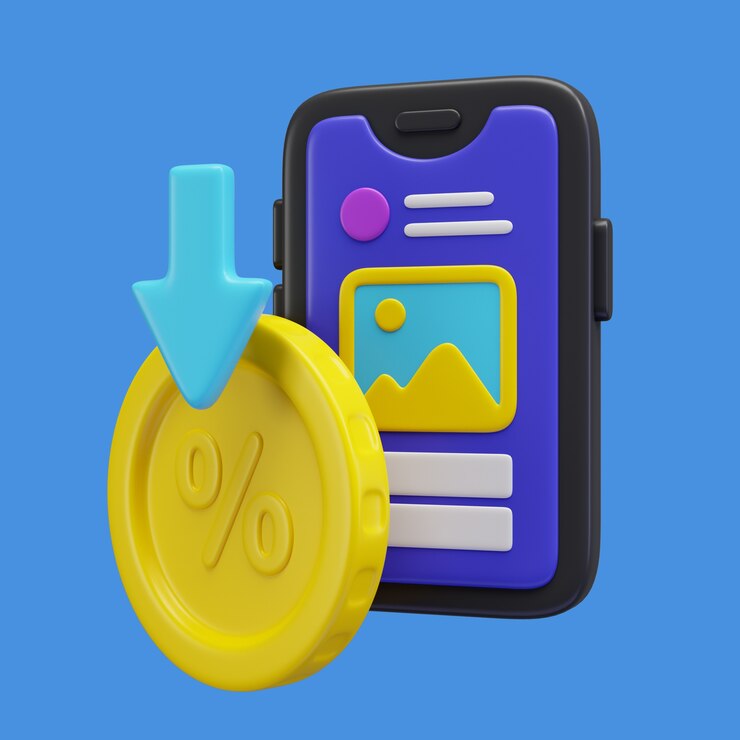Pediatric Healthcare
Your first line of defense in health. Our primary care services cover check-ups and vaccinations.
Explore the professional journey, expertise, and achievements of a dedicated medical practitioner. Discover education, experience, clinical skills, research, and patient care .
A serene haven dedicated to physical and emotional recovery, providing specialized therapies.
An adventure facility providing equipment, training, and guided experiences.
A nurturing environment for children's growth and learning, equipped with a range of developmental programs.

Dr. Laura Jerry brings a wealth of experience and expertise to her practice. With a focus on patient-centered care, she is known for her warm and empathetic approach, always taking the time to listen to her patients’ concerns. Her extensive medical knowledge and dedication to staying at the forefront of the field make her a trusted healthcare partner.
Explore the range of medical services Dr. Collins offers, including general check-ups, preventative care, chronic disease management, and more. She is committed to working with you to develop personalized treatment plans that suit your unique needs.
Your first line of defense in health. Our primary care services cover check-ups and vaccinations.
Access to top medical specialists for in-depth evaluation and treatment of specific health conditions.
Tailored healthcare services for women, including gynecology, obstetrics, and reproductive health.
Specialized care for our senior patients, focusing on age-related health issues chronic disease.
State-of-the-art diagnostic services, including imaging, laboratory tests, and screenings

Mr. Lee displayed remarkable responsiveness, professionalism, expertise, and proficiency. He swiftly grasped the intended concept and guided me in creating an elegant and captivating presentation.

Sarah exhibited remarkable responsiveness, professionalism, knowledge, and expertise. She quickly understood the intended concept and guided me in creating a sleek and aesthetically pleasing presentation.

Maecenas finibus nec sem ut imperdiet. Ut tincidunt est ac dolor aliquam sodales. Phasellus sed mauris hendrerit, laoreet sem in, lobortis mauris hendrerit ante. Ut tincidunt est ac dolor aliquam sodales phasellus smauris

In the ever-evolving landscape of mobile gaming, advertising has become a crucial revenue stream for developers while also providing players with engaging content and rewarding experiences. Mobile game ad formats have come a long way, offering a variety of options for both developers and advertisers to reach their target audiences effectively. In this article, we’ll explore the most popular mobile game ad formats that have gained traction in recent years and that will help you reach the top!

Interstitial ads are full-screen advertisements that appear at natural breaks in gameplay, such as between levels or when transitioning from one screen to another. These ads are typically displayed for a few seconds and can include images, videos, or interactive elements. Interstitial ads are known for their high visibility and effectiveness in capturing players’ attention.
Key Features:
What really decides consumers to buy or not to buy is the content of your advertising, not its form.
—David Ogilvy
Benefits:
Rewarded video ads offer an exceptional win-win scenario for both players and developers. In this ad format, players willingly opt to watch a brief video advertisement in exchange for valuable in-game rewards. What sets rewarded video ads apart is their remarkable feature of a 100% viewing rate. Players must watch the entire ad to unlock their coveted rewards, making this format exceptionally valuable.
Key Features:
Benefits:
Rewarded video ads shine in the mobile advertising landscape due to their inherent value proposition – a guaranteed viewing rate. This characteristic sets them apart from other ad formats like interstitials, making them a powerful choice for developers and advertisers alike.
Playable ads take interactivity to the next level. Instead of passively watching a video or image, players get to experience a mini-version of the advertised game before deciding to download it. These ads are highly engaging and can give players a taste of the gameplay, mechanics, and overall experience, increasing the likelihood of conversion.
Key Features:
Benefits:
Banner video ads, one of the earliest mobile ad formats, are compact advertisements that can appear at different locations on the screen, such as the top or bottom, depending on the game’s design. Notably, the size and placement of these banners can vary significantly based on the specific requirements of each game. Additionally, some advertising networks offer adaptive banners that adjust in real-time to fit the game’s layout seamlessly.
Key Features:
Benefits:
Banner video ads, with their adaptability and varying sizes, accommodate the unique characteristics of each game, making them a versatile choice for developers and advertisers aiming to strike the right balance between monetization and user experience.
Native ads seamlessly blend into the game’s user interface, mimicking the look and feel of the game itself. These ads are often integrated into menus, loading screens, or other non-intrusive elements. Native ads aim to provide a more organic and less disruptive advertising experience. When done right, they can enhance the overall immersion of the game and contribute to player retention.
Key Features:
Benefits:
Audio ads represent a unique and immersive form of advertising within mobile games. Instead of relying solely on visuals, audio ads harness the power of sound to engage players. These ads typically play in the background while the game is running, offering a non-intrusive yet highly effective way to convey brand messages or promote products to players.
Key Features:
Benefits:
In-game ads, specifically billboard ads, take advantage of virtual billboards or advertising spaces within the game environment. These billboards showcase brand messages, imagery, or video content in a contextually relevant manner. By integrating these ads into the game’s world, developers can create a more realistic and immersive experience for players.
Key Features:
Benefits:
Direct brand deal ads integration involves collaborating directly with brands for in-game advertising. Developers integrate brand content, products, or promotions seamlessly into their games. These deals often result in unique, contextually relevant ad experiences tailored to the game’s theme. However, we take a comprehensive approach by combining all these ad formats – including audio, in-game, and rewarded video ads, among others – with specialized integrations to create immersive and contextually relevant ad experiences.
Key Features:
Benefits:
The world of mobile game advertising has evolved into a dynamic landscape that offers diverse opportunities for developers, advertisers, and players. From high-impact interstitials to the immersive soundscapes of audio ads, the guaranteed engagement of rewarded video ads, and seamless integrations of native ads, each format brings unique strengths to the table. Direct brand deals and in-game ads (billboard) further enrich the experience, fostering partnerships and creating immersive game worlds.
As the mobile gaming industry continues to expand, these ad formats contribute to a thriving ecosystem, emphasizing the importance of a delicate balance between monetization and user satisfaction while promising continued innovation and engaging experiences for all stakeholders.

Mobile games have become a popular way for people to pass the time, with their simple gameplay mechanics and easy-to-learn controls. But as artificial intelligence (AI) is increasingly used in gaming, mobile games are becoming more sophisticated and giving players a more personalized and immersive experience.
Mobile gaming is distinguished by its accessibility and simplicity. Ideal for players looking for a quick gaming fix because they typically have a short playtime and are simple to learn.
These games frequently have basic graphics, limited controls, and clear and simple gameplay mechanics. As such, AI’s ability to generate dynamic, varied content and adapt to user behaviour analysis while also facilitating rapid prototyping makes it a valuable tool for their development.

Artificial intelligence is a field of computer science that focuses on the development of algorithms and programs that can perform tasks that typically require human intelligence, such as learning, reasoning, and problem-solving.
There are three main categories of artificial intelligence: super AI, general or strong AI, and narrow or weak AI. While general or strong AI is intended to perform any intellectual task that a human can, narrow or weak AI is only intended to perform a single task. Super AI is a speculative type of AI that is smarter than any human.
Artificial intelligence has two subfields: machine learning and deep learning. In contrast to deep learning, which uses neural networks for data analysis and learning, machine learning uses algorithms to analyse and process data
In gaming, AI is used to create more realistic and challenging opponents, enhance the graphics and audio, and provide players with personalized experiences. These include but are not limited to: intelligent behaviour for computer-controlled characters within the world, dynamically adjusting difficulty level based on the player’s progress.
It’s going to be interesting to see how society deals with artificial intelligence, but it will definitely be cool.
—Colin Angle
Dynamic Difficulty Adjustment
Dynamic difficulty adjustment is a technique used in mobile games that allows the game to adjust its difficulty level based on player performance. This can help ensure that the game remains challenging without becoming too difficult.
Predictive Analytics and Behavioral Analysis
Predictive analytics and behavioral analysis, although related, serve distinct purposes in AI-powered hyper casual mobile gaming. While predictive analytics focuses on analyzing patterns and trends in player data to anticipate future actions and outcomes, behavioral analysis delves into the study of player behavior to understand preferences, skill levels, and playstyles.
Predictive analytics aids in making informed predictions and decisions, enabling game elements such as dynamic difficulty adjustment and personalized content recommendations. On the other hand, behavioral analysis provides insights into player engagement, satisfaction, and interaction patterns, helping game developers optimize the overall gaming experience and tailor it to individual players’ preferences.
By leveraging both predictive analytics and behavioral analysis, game developers can create highly engaging and immersive games that adapt intelligently to players’ actions and offer personalized experiences.
Real-time Adaptation
Another way that AI is used in mobile games is through real-time adaptation. Real-time adaptation allows games to modify gameplay and difficulty levels in real time in response to player performance. This makes it possible for a more tailored gaming experience and keeps the player engaged in the game.
Real-time analysis of user behaviour and game performance is how real-time adaptation functions. The game makes use of this information to modify the gameplay mechanics, such as the difficulty level, so that if the user is having trouble completing a level or task, the game can lower the difficulty to better suit their ability.
This makes the game more approachable and fun. Players are kept interested and entertained as a result of the dynamic and constantly changing gaming experience that is produced.
As AI technology continues to advance, the future of mobile games looks very promising. Here are some potential developments that we can expect to see in the coming years:
Virtual Reality Integration
One area where AI could have a significant impact on mobile games is in virtual reality integration. With the help of AI, developers could create more immersive and engaging virtual reality experiences for users.
More Engaging and Immersive Experiences
AI can also help to create more engaging and immersive experiences in mobile games. For example, AI can be used to generate realistic and dynamic environments, or to create more complex and challenging gameplay mechanics.
Advancements in AI Technology
As AI technology continues to evolve, we can expect to see even more advanced applications of AI in mobile games. This could include more sophisticated real-time adaptation algorithms, or the ability to generate AI-generated content that is indistinguishable from human-created content.
The Possibility of AI-Generated Content
AI-generated content is one potential advancement that is especially intriguing. With the development of AI technology, it might be feasible to design entire games entirely using AI algorithms without the assistance of humans. Although it may sound like science fiction, this is a very real possibility that has the potential to completely transform the gaming industry in the years to come.
Data privacy is a concern as AI is used more frequently in gaming. To function properly, AI algorithms require enormous amounts of data, much of which contains private user information. Developers must make sure they are taking all necessary precautions to safeguard user data and uphold user privacy.
Ultimately, it is the responsibility of game developers to ensure that they are using AI ethically and responsibly. This means taking steps to protect user privacy, and ensuring that AI is used in a way that enhances the overall gaming experience.
How does AI improve gameplay in mobile games?
AI can improve gameplay in mobile games by providing a more personalized and engaging experience. For example, AI can be used to adjust the difficulty level in real-time, ensuring that the game is challenging but not frustrating.
Can AI-generated content replace human game developers?
While AI-generated content is a possibility, it is unlikely that it will ever completely replace human game developers. Human creativity and innovation are still essential to the gaming industry, and AI should be seen as a tool to enhance and augment human creativity, rather than replace it.
How can AI in gaming impact society in the future?
AI in gaming has the potential to impact society in a variety of ways, from creating new job opportunities in the gaming industry to providing new and innovative ways to engage with technology.
AI in gaming has the potential to impact society in a number of ways, from creating more engaging and immersive experiences to improving educational games that can help people learn new skills.
Mobile gaming has advanced significantly as a result of the rise of artificial intelligence. By enhancing graphics and audio, enhancing gameplay, and enabling customised gaming experiences, AI technology has completely transformed the gaming industry. Games have become more immersive and engaging thanks to AI-powered tools like dynamic difficulty adjustment, predictive analytics, behavioural analysis, and real-time adaptation.
Looking ahead, mobile gaming with AI has a bright future. The integration of virtual reality, more immersive and engaging experiences, and improvements in AI technology are just a few of the intriguing possibilities. Even AI-generated content has the potential to exist and have a significant impact on the gaming sector.
In conclusion, mobile gaming is not an exception to how important AI has become in the gaming industry. We can anticipate even more inventive and exhilarating gaming experiences as AI technology continues to develop and get better. To protect players’ privacy and wellbeing, it is crucial to take into account the ethical implications of using AI in gaming.

In the rapidly evolving landscape of mobile apps, developers are constantly seeking new ways to monetize their creations. One of the most popular and effective methods is through In-App Purchases (IAPs). This article will explore the world of IAPs, their significance in the app industry, their impact on users, and some best practices for developers.

In-App Purchases (IAPs) are a form of microtransactions within mobile applications, allowing users to buy virtual goods or services directly within the app. These purchases enhance the user experience, unlock premium content, and help developers generate revenue. Common examples of IAPs include buying in-game currency, ad removal, premium features, and content packs.
IAPs have revolutionized the way developers make money from mobile apps. They offer several key advantages:
Revenue Generation: IAPs provide a consistent revenue stream for app developers. As users make small, frequent purchases, the financial success of the app becomes more predictable and sustainable.
Enhanced User Experience: IAPs can significantly improve the user experience by offering the option to remove ads, access premium content, or progress faster in a game. Users appreciate the flexibility to choose how they want to engage with the app.
App Monetization Model: IAPs allow developers to offer their apps for free or at a low upfront cost, making it easier to attract a wider user base. This freemium model can lead to higher download numbers and more engaged users.
The Four Types of In-App Purchases (IAPs) and How to Use Them:

(Coin/money)

(Gems/hard currency)
Consumables are virtual items that users can purchase and use up within the app. Once consumed, they typically need to be repurchased. Common examples of consumables include in-game currency, power-ups, or virtual goods.
Tips for Using Consumables:

(Battle Pass)

(No ads)
Non-consumables are IAPs that users buy once and retain permanently. They include items such as ad removal, additional levels, or permanent character skins in games.
Tips for Using Non-Consumables:


Renewable subscriptions grant users access to premium content or features for a set period (e.g., monthly or annually). Examples include premium content in news apps, ad-free experiences, or extra cloud storage in productivity apps.
Tips for Using Renewable Subscriptions:


Non-renewable subscriptions provide access to premium content or features for a fixed duration, typically a one-time purchase for a limited period.
Tips for Using Non-Renewable Subscriptions:
While IAPs offer substantial benefits to developers, they also raise important considerations for users:
Successful implementation of IAPs requires careful planning and execution. Here are some best practices for developers:
In-App Purchases (IAPs) have become a cornerstone of the mobile app ecosystem. When implemented thoughtfully, they benefit both developers and users, contributing to a thriving app industry. By following best practices and maintaining transparency, developers can create a win-win situation where users get the value they desire, and developers generate revenue for their hard work. Understanding the nuances of the four types of IAPs and applying effective strategies can lead to success in the competitive world of mobile apps.
